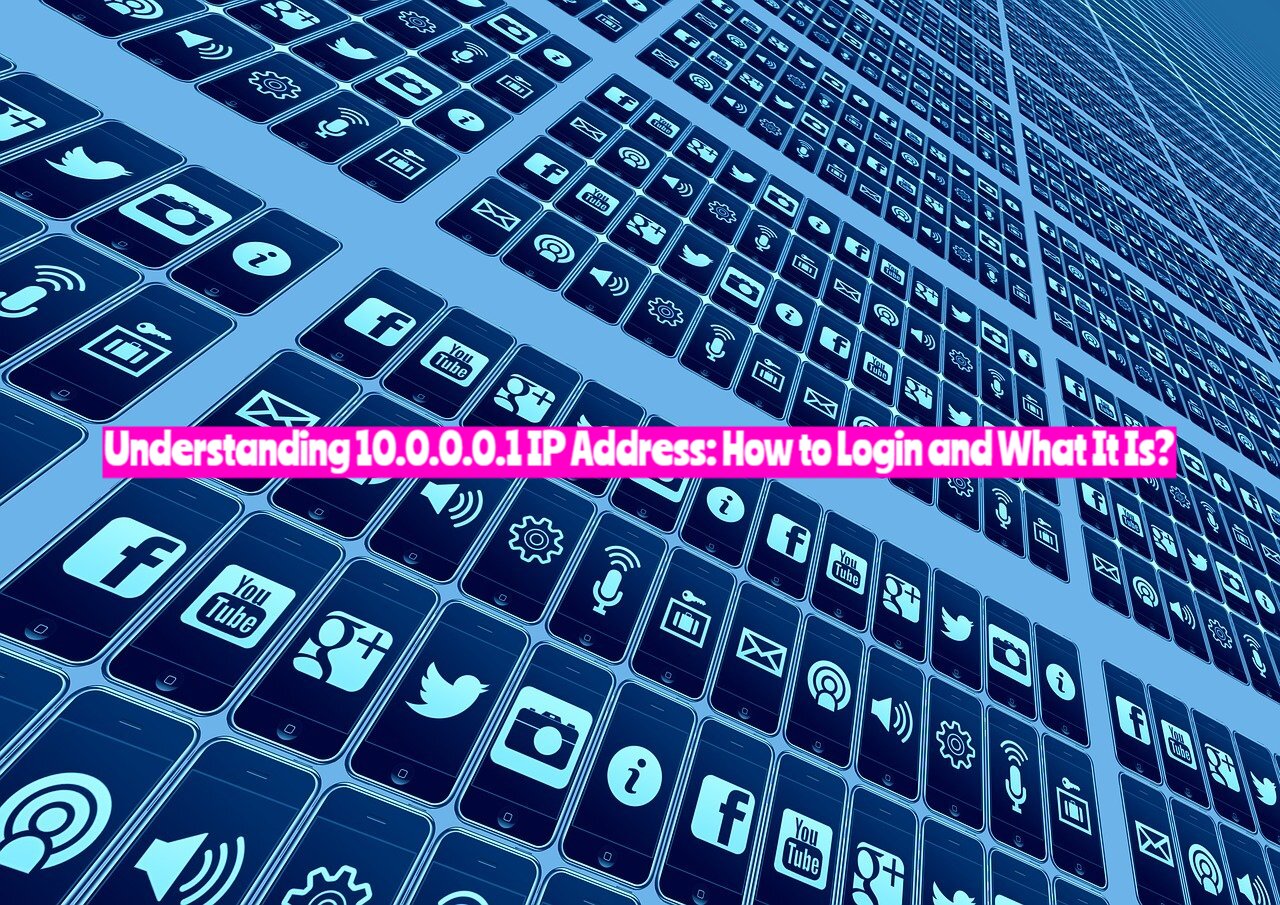In the high-speed digital universe that fuels our day-to-day life, one specific coordinate you might often encounter is the ‘10.0.0.1 IP Address’. At first glance, it looks like a cryptic code, but this humble sequence plays a paramount role in orchestrating the melody of our internet connections. No matter if you’re a whiz at tech, a newcomer to the world of IP addresses, or someone grappling with network issues, unveiling the secrets of the 10.0.0.1 IP Address can steer you towards a better understanding and enhanced command over your internet network.
In this beginner-friendly guide, we’ll unlock the world of the 10.0.0.1 IP address. We’ll simplify the jargon into digestible insights and showcase exactly what this digital code means, and how it silently yet effectively manages your network’s rhythm. Going beyond, you’ll be guided through a thoughtfully laid-out login process, reinforcing your sense of control over your connection. So whether you’re donning your troubleshooting hat or simply wish to expand your digital knowledge frontier, this guide will illuminate the path towards demystifying the 10.0.0.1 IP address.
An Easy-to-understand Guide to IP Addresses
An IP address is essentially a unique numerical label assigned to individual devices or internet networks. It serves a dual purpose – identifying the host and directing it to the device’s location within the network.
With the introduction of the more complex IPv6 protocol launched in 2011, IP addresses evolved. However, the widely used and base protocol remains IPv4, which is based on 32 bits.
While some IPv4 addresses are public, meaning they can connect directly to the internet and be seen on websites, others are private. These private addresses, reserved for closed networks, are integral in inter-device connections within an office or a home network. Devices like printers, wireless access points, network switches, and Network-Attached Storage units rely heavily on these private IP addresses.
The Internet Assigned Numbers Authority (IANA) has reserved the following number ranges for these private (gateway) IP addresses:
- 10.0.0.0 – 10.255.255.255
- 172.16.0.0 – 172.31.255.255
- 192.168.0.0 – 192.168.255.255
10.0.0.1 falls within these ranges, thereby attesting to its common usage.
Getting Familiar with 10.0.0.0.1
The private IP address 10.0.0.0.1 commonly serves as the default IP address for specific routers, including:
- Xfinity routers (by Comcast)
- LPB Piso Wifi routers – coin-operated wifi routers
- Some Cisco routers
The address 10.0.0.0.1, just like the reserved private IP addresses within the first block, proves useful within professional settings with multiple devices connected to the same router. However, most household routers and related devices generally default to the ‘192’ range.
Why Your Router Needs an IP Address
Your Internet service provider (ISP) provides IP addresses that facilitate web surfing (while also enabling tracking, unless you use a VPN). All the web traffic passes through your router, making an IP address for the router necessary for accessing settings.
Connecting to your router directly can be a bit of a hassle, but your router’s private IP address simplifies the process. Just input http:// followed by your router’s IP address, hit enter, and you’re good to go! This allows you to change passwords, update firmware, modify port settings, or troubleshoot certain issues.
Accessing 10.0.0.0.1 Router Admin Interface Made Easy
- Connect your device to the router.
- Launch your web browser (Google Chrome, Firefox, or Safari works well).
- Enter 10.0.0.0.1 into the address bar and hit Enter.
- Populate the default username and password fields and press Sign In.
Voila! You just accessed the admin dashboard using the 10.0.0.1 address.
A Quick Rundown of Common 10.0.0.1 Login Issues
It might not always be smooth sailing when attempting to access your router via the 10.0.0.1 IP address – here are some common issues:
- Forgotten username or password
- ‘Your Connection is not private’ warning
- ‘This Site Can’t Be Reached’ error
- Incorrectly entered IP address
- ‘Took Too Long to Respond’ error
Final Words on 10.0.0.0.1
Hopefully, you have a clearer understanding of the 10.0.0.0.1 (actually 10.0.0.1) IP address – a commonplace default gateway address. This private IP address is dedicated to local network use, rendering it useless for browsing the web.
This IP address is mainly in connection with Xfinity/Comcast routers, LPB Piso WiFi routers, and particular Cisco modems.
To avoid confusion or errors, remember that 10.0.0.1 is an IPv4 address. It should contain four sets of numbers, each separated by dots. To access its configuration panel, simply type or paste http://10.0.0.1 into your browser’s address bar, hit enter, and be prepared to log in. Each exploration of the router’s gateway IP address inches you closer to becoming a network wizard!

